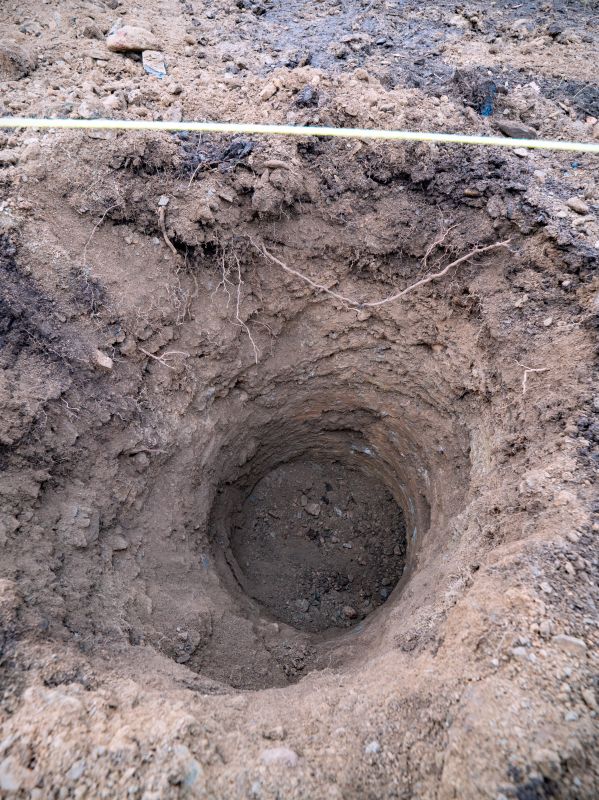Ultimate Selection of Products for Dry Well Installation Service
Find the most trusted tools and supplies to facilitate smooth dry well installation and prevent future drainage issues.
 Installing a dry well is an effective method for managing excess water runoff and preventing flooding around properties. The process involves directing water away from foundations and other structures into a controlled underground chamber where it can disperse safely into the surrounding soil. Proper installation requires a combination of durable materials and appropriate components to ensure long-term functionality. Selecting the right products is essential for creating an efficient and reliable dry well system.
Installing a dry well is an effective method for managing excess water runoff and preventing flooding around properties. The process involves directing water away from foundations and other structures into a controlled underground chamber where it can disperse safely into the surrounding soil. Proper installation requires a combination of durable materials and appropriate components to ensure long-term functionality. Selecting the right products is essential for creating an efficient and reliable dry well system.
Top Overall Option
Perforated Drainage Pipe System
A perforated drainage pipe system is designed to efficiently channel water into the dry well while allowing for easy installation and maintenance. It typically includes flexible, perforated pipes made from durable materials that resist corrosion and crushing. These systems often come with filter fabrics to prevent soil intrusion, and are compatible with various gravel or stone backfills to enhance water flow. Their versatility makes them suitable for a wide range of property sizes and drainage needs, providing a reliable foundation for effective water management.
Types of Products For Dry Well Installation Service
Perforated Drainage Pipes
Flexible pipes with perforations designed to direct water efficiently into the dry well.
Filter Fabric Liners
Heavy-duty fabrics that prevent soil and debris from clogging drainage pipes and gravel beds.
Gravel and Crushed Stone
Clean gravel or crushed stone used to backfill around pipes and promote water flow.
Dry Well Chambers
Preformed plastic or concrete chambers that serve as the main collection and dispersal unit.
Drainage Covers and Grates
Protective covers that prevent debris entry while allowing water to flow freely.
Flexible Couplings
Connectors that join multiple pipes securely and allow for adjustments during installation.
Catch Basins
Inlet structures that collect surface water before directing it into the dry well system.
Waterproof Sealants
Sealants used to ensure joints and connections are watertight.
Inspection Ports
Access points for maintenance and inspection of the dry well system.
Drainage Pumps
Submersible or external pumps used to assist in water removal if necessary.
Popular Choices
Widely used for its adaptability and ease of installation in various drainage projects.
Commonly selected to keep soil particles out of pipes and gravel beds.
Popular for its excellent drainage properties and ease of use in dry well setups.
Favored for their straightforward installation and reliable performance.
Chosen for their durability and ability to prevent debris entry while allowing water flow.
Popular for connecting pipes securely and accommodating adjustments during installation.
Frequently used to gather surface runoff before directing it into the dry well system.
Often selected to ensure watertight joints in the drainage system.
Commonly used for easy access during maintenance and inspections.
Chosen for assisting in water removal in areas with high water tables or heavy runoff.
A comprehensive dry well installation includes various components such as perforated pipes, filter fabrics, gravel or crushed stone, and waterproof covers. These elements work together to facilitate water flow, prevent debris infiltration, and maintain structural integrity. The durability of materials is crucial, especially in areas with frequent water flow or challenging soil conditions. Investing in quality products can help ensure the system performs as intended, reducing maintenance needs and extending its lifespan.
When planning a dry well installation, it is important to consider the size and capacity of the system based on the expected water volume. Proper planning involves understanding local soil absorption rates, drainage requirements, and potential obstructions. Additionally, ease of installation and compatibility with existing drainage infrastructure are key factors. Using versatile and adaptable products can simplify the process and improve overall effectiveness of the system.
Ultimately, selecting the right products for a dry well installation can lead to a more efficient water management solution. Whether for residential or commercial use, understanding the different product options and their applications helps in making informed decisions. Well-chosen components contribute to a system that functions reliably, minimizes water-related issues, and provides peace of mind for property owners.
Key Buying Considerations
- Assess the expected water volume and flow rate to select appropriately sized components.
- Consider soil type and permeability to determine the necessary capacity and backfill materials.
- Evaluate the durability and material quality of pipes and chambers for long-term performance.
- Ensure compatibility between different system components for seamless installation.
- Check for easy access features like inspection ports to facilitate maintenance.
- Determine if additional accessories like pumps or catch basins are needed for your site.
- Review local building codes or regulations related to drainage system installation.
- Select filter fabrics that resist tearing and clogging to maintain system efficiency.
- Choose gravel or stone that is clean and free of fines to promote optimal water flow.
- Plan for proper system sizing to prevent overflow or insufficient drainage.
- Consider the ease of installation and whether professional help is required.
- Evaluate the need for waterproof sealants and secure connections to prevent leaks.
- Look for products with warranties or guarantees for added peace of mind.
- Think about future expansion or modifications that may be needed.
- Prioritize products with good reviews and a reputation for reliability.
This content contains affiliate links. We may earn a commission if you make a purchase through these links, at no additional cost to you.
